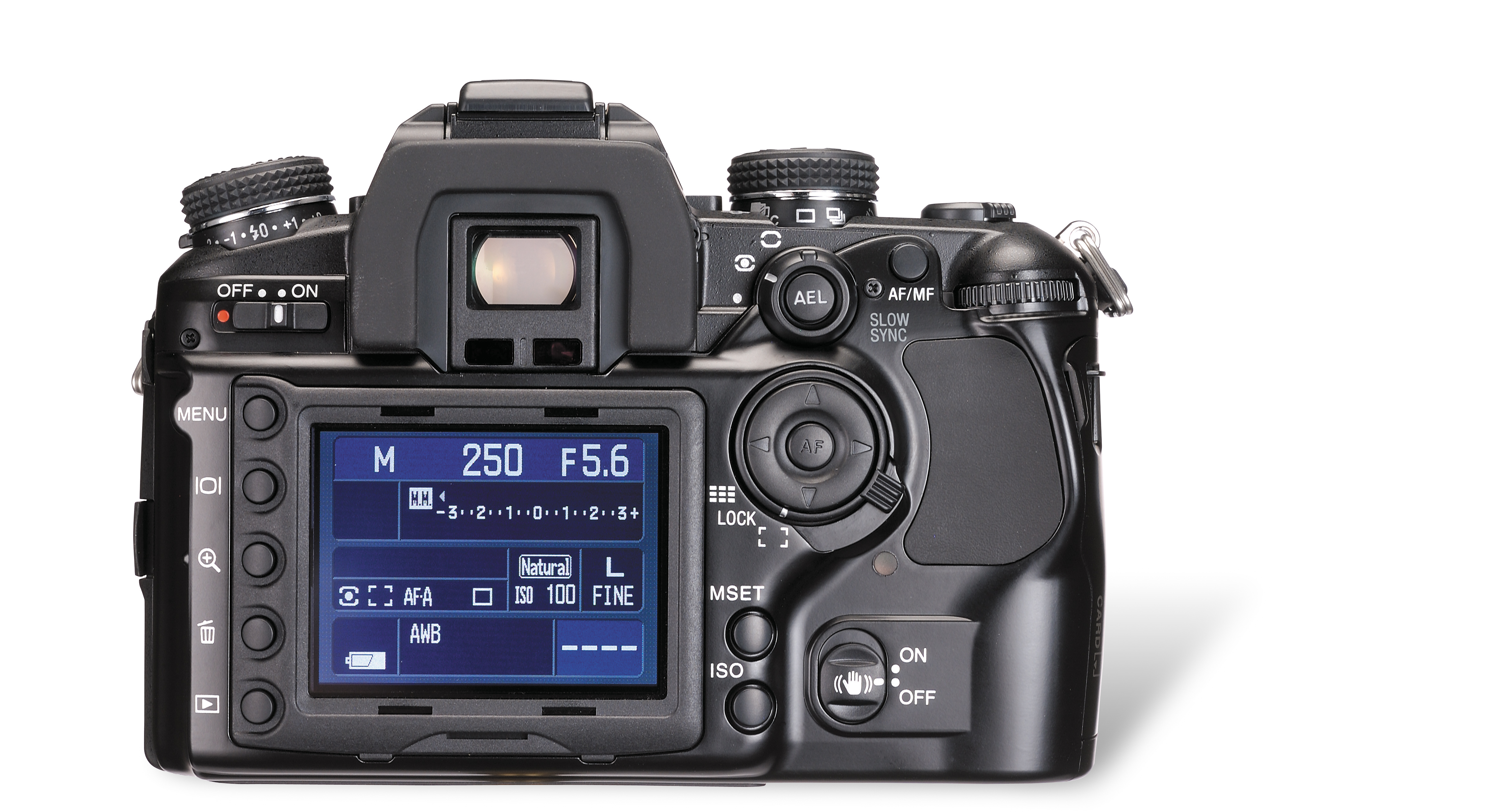TechRadar Verdict
The built-in anti-shake system is a plus point but, ultimately, the 7D doesn't do enough for the money
Pros
- +
Anti-shake
Cons
- -
No 'kit' lens
Why you can trust TechRadar
Konica Minolta has taken a long time to bring a digital SLR to the market, giving Canon, Nikon and Pentax a substantial head start. How many Minolta owners have defected to these brands in the meantime?
But the Dynax 7D is here at last, and although it offers a very ordinary DSLR resolution of 6-megapixels, it introduces Konica Minolta's exclusive anti-shake technology to the world of SLRs.
This system's previously been seen in the company's A-1, A-2 and A-200 compact models. It's designed to counter camera shake, which starts to affect image quality with longer focal length lenses and longer shutter speeds of 1/30sec or slower.
Like other image stabilisation systems, this can only reduce camera shake at 'marginal' shutter speeds, and can't replace a tripod. Konica Minolta claims you should be able to shoot at shutter speeds 2-3 settings slower than normal, and our tests indicate this is probably about right. Other key features with the Dynax 7D include a large, 2.5-inch LCD display and full compatibility with the Konica Minolta range of AF lenses.
The LCD display is interesting because it's used for displaying all camera set-up and shooting information. This camera doesn't have a secondary mono LCD on the top plate. The Dynax's LCD is backlit, which can be a distraction when shooting, but the camera switches the backlight off the moment you put the camera to your eye, which solves that particular problem.
No lens
One problem that may not be solved quite so easily is the lack of any 'kit' lens to go with this camera. The nearest equivalent at the moment is the 17-35mm lens supplied with our test unit. This costs around £400 on its own, though you might be able to save a little cash by finding a retailer (Jessops, for example) selling this lens and camera in combination.
Alternatively, you could invest in an inexpensive third-party 'digital' zoom like Sigma's £100 18-50mm.
This is a big, meaty camera, with a good grip. So while it's a little bulkier than some of its rivals, it'll suit those people who prefer something you can grab hold of.
On the top of the camera, to the right of the pentaprism, is the main mode dial. This locks into place, so that have to press a button in the centre before you can move it. It seems an unnecessarily awkward system, but then you can sometimes find with other cameras that it's all to easy to accidentally swap modes when your finger's looking for the control dial.
To the right of the main mode dial you'll find the white balance switch. This has three positions: auto, preset and manual. If you choose the middle, preset option, you have to press a button in the centre of the switch and, at the same time, rotate the control dial to choose the right preset on the LCD display. Once you've chosen a preset, though, the camera remembers it. This means that you can swap from 'auto' to 'tungsten', say, just by flicking the switch on the top.
To the far left of the top plate is a similarly sized EV compensation knob. Again, it's great to have this option so easily accessed and for the chosen setting to be so visible. Beneath this is the flash compensation option. This is slightly less useful on a shot-by-shot basis, and it would be better if the ISO control was here.
Instead, the ISO is adjusted in a more conventional manner by pressing a button (on the back of the camera) and rotating a control wheel to display the required value on the LCD.
The picture quality fails to break any new ground. You can get images as good as these without paying anywhere near as much cash. The colour fidelity and saturation, image contrast and dynamic range are good, but matched by the likes of the (much cheaper) EOS 300D and Nikon D70.
The multi-pattern metering mode seems no more intelligent than ordinary centreweighted metering, in that it's heavily influenced by highlights or bright areas within the image so that your photographs can come out unexpectedly underexposed, or with impenetrable black shadows.
Worse than that, many shots with intense highlights (like our interior shot of Wells Cathedral to the right) show noticeable blue fringes. You expect this kind of thing in a compact, but you might not in a £1,100 digital SLR.
The Dynax 7D's all-round performance is only average. Its main advantages are its anti-shake system, which will only prove useful in specific conditions, and its control layout and general build quality. If you're not already a Konica Minolta fan, the 7D just isn't good enough to stand above its rivals. Rod Lawton
Via PhotoRadar
Tech.co.uk was the former name of TechRadar.com. Its staff were at the forefront of the digital publishing revolution, and spearheaded the move to bring consumer technology journalism to its natural home – online. Many of the current TechRadar staff started life a Tech.co.uk staff writer, covering everything from the emerging smartphone market to the evolving market of personal computers. Think of it as the building blocks of the TechRadar you love today.
